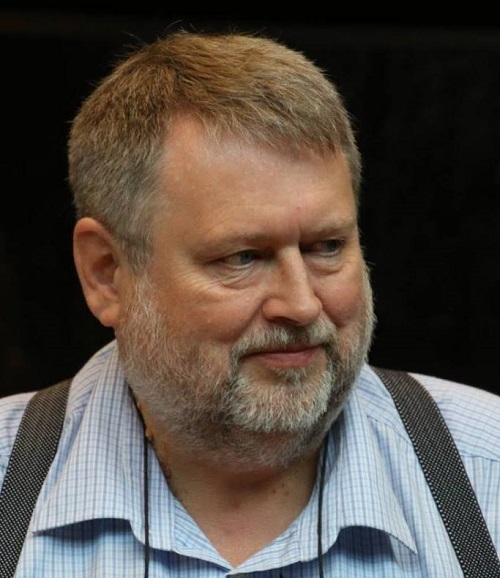
Diamond OA journals face similar challenges around the world. Funding and support are needed to make the transition to high-quality open access publishing possible.
During the past years, an increasing number of commercial scholarly publishers have moved to open access publishing. However, to compensate for the loss of the revenue from subscription fees, many publishers have adopted article processing charges, APCs in short.
This business model has become highly profitable for many commercial publishers: a recent study of Zhang, Huang and Sivertsen estimates that APC revenues among twelve major global publishers exceeded 2 billion US dollars in 2020.
In Finland, the expenses of open access publishing were calculated as part of the open science and research monitoring exercise in 2022. According to the monitoring, 4 million euros were used in Finnish research organisations for APCs and book processing charges (BPCs) in 2021.
This development has caused critique across the science community and reinforced the movement towards charge-free open access publishing, i.e. diamond open access. Science Europe, an association representing major public organisations funding or performing research in Europe, defines diamond open access as follows:
“Diamond Open Access refers to a scholarly publication model in which journals and platforms do not charge fees to either authors or readers. Diamond Open Access journals are community-driven, academic-led, and academic-owned publishing initiatives. Serving a fine-grained variety of generally small-scale, multilingual, and multicultural scholarly communities, these journals and platforms embody the concept of bibliodiversity. For all these reasons, Diamond Open Access journals and platforms are equitable by nature and design.”
Science Europe and cOAlition S, an international consortium of research funding and performing organisations, published the OA diamond journals study in 2021. It includes a report of the global situation of diamond open access journals and recommendations for funders, institutions and societies.
The study finds that there are a few main concerns which many diamond journals share. These are, for example, lack of technical skills and resources to publish their content in a format which fulfils the standards specified in Plan S technical requirements. As a cause and effect of this, a large share of OA diamond journals are not included in established indexes for open access journals, such as DOAJ (Directory of Open Access Journals).
The study highlights that the editorial tasks of the journals are mainly based on the voluntary work of researchers, because the funding is not on a permanent basis. Voluntary work, e.g. editorial tasks or peer-review, is either not taken into account enough, for example, in institutions researchers’ assessment policies.
The study shows that despite common concerns the landscape of diamond journals is very diverse and fragmented. In conclusion, the study recommends measures for better utilising and sharing know-how and resources.
Diamond open access is prevailing for Finnish journals
In Finland, according to a study conducted in 2020, the majority of peer-reviewed open access journals are diamond. Finnish diamond journals face the same issues as OA diamond journals study describes: The journals rely heavily on volunteer work and the transition to open access publishing causes financial challenges.
The Finnish journal landscape is also characterised by the dominant role of learned societies as publishers. The Federation of Finnish Learned Societies supports journals by maintaining the Journal.fi platform which is a journal management and publishing service to guarantee centralised and technically high-quality open access publishing.
In 2019, a national policy and executive plan on open access to scholarly publications was published. One objective of the policy was that the research community creates a jointly funded publishing model that enables immediate open access to research articles published in Finland.
At the moment, 44 percent of Finnish peer-reviewed journals and series are published in Finnish. As OA diamond journals study highlights, diamond OA journals are much more multilingual than, for example, journals which charge APCs.
On this basis, it can be seen that support for diamond OA publishing infrastructures also supports multilingual research as Helsinki Initiative on Multilingualism in Scholarly communication has recommended.

International policies in support of diamond open access
It is increasingly recognized in the international policies that diamond OA is the more sustainable solution to scholarly communication than APC or subscription based publishing models, which maintain high barriers and costs to open access. The UNESCO Recommendation on Open Science (pdf) encourages member states to support “not-for-profit, academic and scientific community-driven publishing models as a common good”, and to encourage “multilingualism in the practice of science, in scientific publications and in academic communications.”
Also the European Commission stresses in its draft council conclusions on research assessment and implementation of open science (pdf) that “subscription fees as well as open access publication fees when applied, should be transparent and commensurate with the publication services”. In the draft the member states and research organisations are encouraged to “take concrete measures against the proliferation of insufficiently transparent contractual arrangements in their interactions with publishers”.
Wide range of stakeholders are committed to supporting the Action Plan for Diamond Open Acess. In addition, two newly launched projects funded by the European Union - DIAMAS and Craft-OA - develop capacity, standards, tools, services and technical infrastructures for diamond OA publishing.
To ensure a sustainable non-profit, scholar-led and multilingual publishing ecosystem that is able to provide open access that meets the highest quality and technical standards, more public funding needs to be directed at supporting national diamond OA journals and their publishing operations.
Economies of scale in centralised support
Jan Erik Frantsvåg is a leading open access specialist from UiT The Arctic University of Norway, Tromsø, one author of the OA diamond journals study and a WP lead in the EU project DIAMAS.
For this article, we asked Frantsvåg if, in light of challenges faced by diamond OA journals, the public funding is used most effectively by supporting collective infrastructure, the individual journals and their voluntary work-force, or both. Frantsvågs view is that this is not either or, but both. The main benefit of collective infrastructure is its cost-efficiency.
“Diamond OA is in many ways small-scale, for an economist this means expensive. Supporting centralised infrastructures is a way of keeping costs down, and of increasing the level of competence available for the journals, resulting in journals that better conforms to the technical criteria they should meet - in this way, they become better journals for their authors”, Frantsvåg explains.
Frantsvåg would like to see a number of multinational services that are big enough to realise some of the economies of scale i.e., the ability to efficiently and competently serve a large number of journals: “To be able to produce anything, one must invest in equipment and competence. The investment in equipment for OA publishing amounts to nothing. The real cost lies in competence.”
“There is a vast array of various competences needed to serve a journal, and the resource cost of becoming and being a competent editor is high. If your journal is small, this cost has to be divided over a small number of articles”, Frantsvåg summarises. “And while the most popular software platform for running journals is free, there are considerable competence costs involved in installing, running, updating and optimising this software for stable and efficient use.”
Larger journals can divide the costs over more articles, hence lowering the per-article cost.
“A multi-journal publishing service can divide these costs over even more articles, and maybe start specialising and duplicating competences, meaning retirement or job changes does not mean a stop in publishing or a very reduced competence. These effects are a major force behind the commercial publishers’ drive to become larger, publishing more”, Frantsvåg continues.
So far, multinational services have been concentrated around major world languages. For example, SCielo is a highly extensive multinational platform for Portuguese and Spanish language journals from many Latin American countries. The French language journals, on the other hand, are concentrated around Érudit and Open Edition.
In the Nordic countries the major platform is Open Journal System (OJS). According to Frantsvåg it is well-suited to a multilingual environment, as it is built to be translated to various languages.
“In such an environment serving a number of journals, with user interfaces in a number of languages is quite feasible - but only if you have volumes. You would still need support staff being able to support in those languages, but not more than if you do it nationally. And much support can be done across languages, as the UI translates much”, he explains.

Also local support is required
Frantsvåg emphasises that in addition to centralised services, there is also a demand for local support: “Day-to-day support to editors/journals would be better served by a less centralised structure. This needs a closeness to editors both geographically, linguistically and culturally that an internationally centralised service couldn’t provide.”
However, funding is needed for both international technical infrastructures and regional competence infrastructures. Frantsvåg stresses the important role of the scientific community both in editorial work and as a sponsor of financial resources. In Finland, learned societies publish the majority of scientific journals, and they do not have the same resources to support open publishing as, for example, universities.
“There is less economies of scale in the scholarly part of the editorial work, and editors need to be close to their scholarly communities. There are of course small, struggling journals that could well look at merging with similar journals within the same or neighbouring language communities in order to acquire a sustainable size, but this has to happen organically, initiated by the scholarly communities themselves”, Frantsvåg stresses.
Journals of all sizes need financial support to pay for reasonable costs. Frantsvåg would like to see institutions take responsibility for their publishing and provide support for journals based at their institution.
According to Frantsvåg, and as has repeatedly been pointed out in this article series (in Finnish), a well-functioning diamond OA publishing ecosystem needs multi-level services and resources.
“In my view, combining funding and support of infrastructures and journals on these three levels would give the best chance of developing an institution-based diamond OA publishing ecosystem that could battle the for-profit publishing we are now surrounded by and actively pouring funding into. Diamond OA is what most closely resembles how scholarly institutions took care of dissemination of their scholarly output in the days before we let profit-seeking ventures take control over scholarly content.”
Is our future diamond?
In this article series we have taken a look at the field of Finnish scholarly publishing and found an increasing share (as much as 80 percent) of open access journals and book series (in Finnish). We have also found that domestic scholarly publishing is important for a diverse and multilingual research community (in Finnish) despite pre-print platforms gaining in popularity.
The later articles focus on discussing the possible funding models of open access journals. A common solution has not yet been found (in Finnish) and it is pointed out that the broader trends affecting the research community, such as responsible assessment, should be taken into account (in Finnish) when different options are considered. However, it is clear that the future of Finnish scholarly publishing lies in diamond open access (in Finnish).
All in all, it is clear that domestic scholarly journals are worth treasuring but there are still obstacles to tackle before we reach a diamond future of scholarly publishing.
This article is the final part of the series “Future of Finnish scholarly journals”. The series is a collaborative effort between the secretariats for the Publication Forum and the National Open Science and Research Coordination.
Written by: Anna-Kaarina Linna, Elina Pylvänäinen and Janne Pölönen
Main image: Rostislav Uzunov, Pexels.


